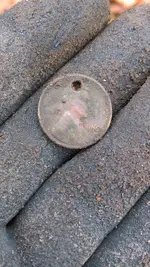- Joined
- Apr 24, 2010
- Messages
- 12,923
- Reaction score
- 27,656
- Golden Thread
- 1
- Location
- Upper Canada 🇨🇦
- 🥇 Banner finds
- 1
- 🏆 Honorable Mentions:
- 3
- Detector(s) used
- XP Deus, Lesche Piranha 35 Shovel & 'Garrett Carrot'
- Primary Interest:
- Relic Hunting
Last Friday morning, I met up with a buddy for a hunt just outside of Kingston, ON. He had received permission to detect a couple of cellar holes and had very generously invited me to join him.  We turned off a paved road and drove a mile up a muddy hill into the bush and parked close to a stream. We put on out rubber boots and detecting gear then proceeded to walk another half mile to the first homestead site. The stone foundations of the barn and of the house were truly spectacular here. I love taking the time to inspect the construction of these remains from long ago, as we just don’t build structures like this anymore.
We turned off a paved road and drove a mile up a muddy hill into the bush and parked close to a stream. We put on out rubber boots and detecting gear then proceeded to walk another half mile to the first homestead site. The stone foundations of the barn and of the house were truly spectacular here. I love taking the time to inspect the construction of these remains from long ago, as we just don’t build structures like this anymore.
Almost immediately I found an 1881 Canadian LC, it was only later after stopping for lunch that friend noticed it was ‘holed’. I love finding ‘holed’ coins, as this was personally done by the owner to either string coins together so as not to lose them. Coins from this period were also ‘holed’ to be worn as mementos in memory of the beloved Queen Victoria who passed way in 1901. My next find was the heart-shaped pin, which still retains some of it’s original blue enamel. One of my brass relic finds had some writing on it. After washing it at home, I was able to make-out the word “Chatillon's” (see the picture of what the scale originally looked like). With the help of the internet, I was able to find the following information…
Chatillon's Spring Balance Scale – New York Pat. Dec. 10, 1867
"In the 18th century, spring scales started to appear. To produce these scales, a manufacturer would use the resistance of a spring to calculate weights, which could be read automatically on the scale’s face. The ease of use of spring scales over balance scales is what led most post offices to outfit their clerks with spring postal scales.
One of the most common types of spring scales was the kitchen scale—also known as a family or dial scale. Designed for horizontal surfaces, these vintage kitchen scales used the weight of goods in a pan at the top of the scale to force the spring down. Such scales were common in early-20th-century households and were sold by Sears and Montgomery Ward. Many had flat weighing surfaces, but some were topped by shallow pans. Companies such as Salters, Chatillon, and Fairbanks made both.
My buddy had a good day as well, he found a ladies Victorian ‘picture’ coat button featuring a flower and a decorative brass Victorian hair clip (see pics). After a break for lunch, we headed across a fast-moving stream, where my friend quickly discovered he had a hole in one of his boots! Lol! Unfortunately, the second site which was located across the stream from the first site proved less productive. All I found here were two spoon bowls and the shaft of a pewter tea spoon."
Thanks again to my buddy for inviting me along!
Dave
 We turned off a paved road and drove a mile up a muddy hill into the bush and parked close to a stream. We put on out rubber boots and detecting gear then proceeded to walk another half mile to the first homestead site. The stone foundations of the barn and of the house were truly spectacular here. I love taking the time to inspect the construction of these remains from long ago, as we just don’t build structures like this anymore.
We turned off a paved road and drove a mile up a muddy hill into the bush and parked close to a stream. We put on out rubber boots and detecting gear then proceeded to walk another half mile to the first homestead site. The stone foundations of the barn and of the house were truly spectacular here. I love taking the time to inspect the construction of these remains from long ago, as we just don’t build structures like this anymore. Almost immediately I found an 1881 Canadian LC, it was only later after stopping for lunch that friend noticed it was ‘holed’. I love finding ‘holed’ coins, as this was personally done by the owner to either string coins together so as not to lose them. Coins from this period were also ‘holed’ to be worn as mementos in memory of the beloved Queen Victoria who passed way in 1901. My next find was the heart-shaped pin, which still retains some of it’s original blue enamel. One of my brass relic finds had some writing on it. After washing it at home, I was able to make-out the word “Chatillon's” (see the picture of what the scale originally looked like). With the help of the internet, I was able to find the following information…
Chatillon's Spring Balance Scale – New York Pat. Dec. 10, 1867
"In the 18th century, spring scales started to appear. To produce these scales, a manufacturer would use the resistance of a spring to calculate weights, which could be read automatically on the scale’s face. The ease of use of spring scales over balance scales is what led most post offices to outfit their clerks with spring postal scales.
One of the most common types of spring scales was the kitchen scale—also known as a family or dial scale. Designed for horizontal surfaces, these vintage kitchen scales used the weight of goods in a pan at the top of the scale to force the spring down. Such scales were common in early-20th-century households and were sold by Sears and Montgomery Ward. Many had flat weighing surfaces, but some were topped by shallow pans. Companies such as Salters, Chatillon, and Fairbanks made both.
My buddy had a good day as well, he found a ladies Victorian ‘picture’ coat button featuring a flower and a decorative brass Victorian hair clip (see pics). After a break for lunch, we headed across a fast-moving stream, where my friend quickly discovered he had a hole in one of his boots! Lol! Unfortunately, the second site which was located across the stream from the first site proved less productive. All I found here were two spoon bowls and the shaft of a pewter tea spoon."
Thanks again to my buddy for inviting me along!

Dave
Amazon Forum Fav 👍
Attachments
-
 WP_20180420_09_58_23_Panorama.webp213.5 KB · Views: 62
WP_20180420_09_58_23_Panorama.webp213.5 KB · Views: 62 -
 WP_20180420_10_03_32_Pro (2).webp459 KB · Views: 57
WP_20180420_10_03_32_Pro (2).webp459 KB · Views: 57 -
 WP_20180420_10_22_54_Panorama.webp308.3 KB · Views: 60
WP_20180420_10_22_54_Panorama.webp308.3 KB · Views: 60 -
 WP_20180420_10_22_22_Pro (2).webp573.5 KB · Views: 70
WP_20180420_10_22_22_Pro (2).webp573.5 KB · Views: 70 -
 WP_20180420_11_04_30_Pro (2).webp349.2 KB · Views: 63
WP_20180420_11_04_30_Pro (2).webp349.2 KB · Views: 63 -
 WP_20180420_09_42_44_Pro (2).webp586.7 KB · Views: 72
WP_20180420_09_42_44_Pro (2).webp586.7 KB · Views: 72 -
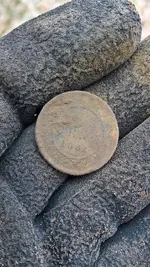 WP_20180420_09_43_49_Pro (2).webp608.4 KB · Views: 63
WP_20180420_09_43_49_Pro (2).webp608.4 KB · Views: 63 -
 WP_20180420_09_56_11_Pro (2).webp495.6 KB · Views: 68
WP_20180420_09_56_11_Pro (2).webp495.6 KB · Views: 68 -
 WP_20180420_09_57_56_Pro (2).webp478.6 KB · Views: 110
WP_20180420_09_57_56_Pro (2).webp478.6 KB · Views: 110 -
 WP_20180420_09_56_31_Pro (2).webp529.5 KB · Views: 76
WP_20180420_09_56_31_Pro (2).webp529.5 KB · Views: 76 -
 WP_20180420_11_37_52_Pro (2).webp400.2 KB · Views: 68
WP_20180420_11_37_52_Pro (2).webp400.2 KB · Views: 68 -
 WP_20180420_12_57_12_Pro (2).webp617.1 KB · Views: 71
WP_20180420_12_57_12_Pro (2).webp617.1 KB · Views: 71 -
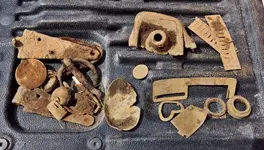 WP_20180420_13_01_50_Pro (2).webp610.3 KB · Views: 71
WP_20180420_13_01_50_Pro (2).webp610.3 KB · Views: 71 -
 WP_20180420_12_14_50_Panorama.webp306.8 KB · Views: 66
WP_20180420_12_14_50_Panorama.webp306.8 KB · Views: 66 -
 WP_20180420_12_40_43_Pro (2).webp796.3 KB · Views: 92
WP_20180420_12_40_43_Pro (2).webp796.3 KB · Views: 92 -
 WP_20180420_13_44_32_Panorama.webp353.6 KB · Views: 58
WP_20180420_13_44_32_Panorama.webp353.6 KB · Views: 58 -
 WP_20180420_13_44_22_Pro (2).webp476.5 KB · Views: 89
WP_20180420_13_44_22_Pro (2).webp476.5 KB · Views: 89 -
 WP_20180421_05_53_56_Pro (2).webp499.4 KB · Views: 64
WP_20180421_05_53_56_Pro (2).webp499.4 KB · Views: 64 -
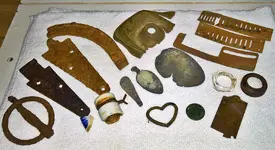 WP_20180422_11_57_37_Pro (2).webp428.4 KB · Views: 58
WP_20180422_11_57_37_Pro (2).webp428.4 KB · Views: 58 -
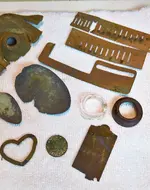 WP_20180422_11_58_14_Pro (2).webp445.2 KB · Views: 68
WP_20180422_11_58_14_Pro (2).webp445.2 KB · Views: 68 -
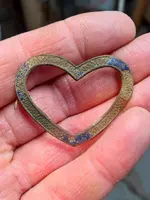 WP_20180422_11_58_58_Pro (2).webp391.5 KB · Views: 64
WP_20180422_11_58_58_Pro (2).webp391.5 KB · Views: 64 -
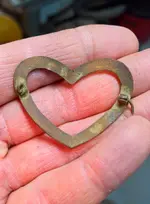 WP_20180422_11_59_13_Pro (2).webp346.8 KB · Views: 62
WP_20180422_11_59_13_Pro (2).webp346.8 KB · Views: 62 -
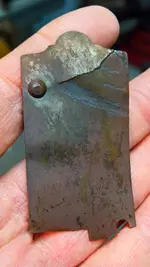 WP_20180422_11_59_38_Pro (2).webp271.7 KB · Views: 63
WP_20180422_11_59_38_Pro (2).webp271.7 KB · Views: 63 -
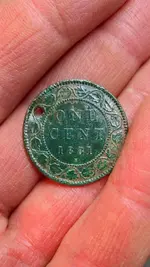 WP_20180422_12_00_57_Pro (2).webp296.4 KB · Views: 58
WP_20180422_12_00_57_Pro (2).webp296.4 KB · Views: 58 -
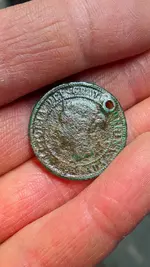 WP_20180422_12_00_29_Pro (2).webp319.2 KB · Views: 62
WP_20180422_12_00_29_Pro (2).webp319.2 KB · Views: 62
Upvote
9







